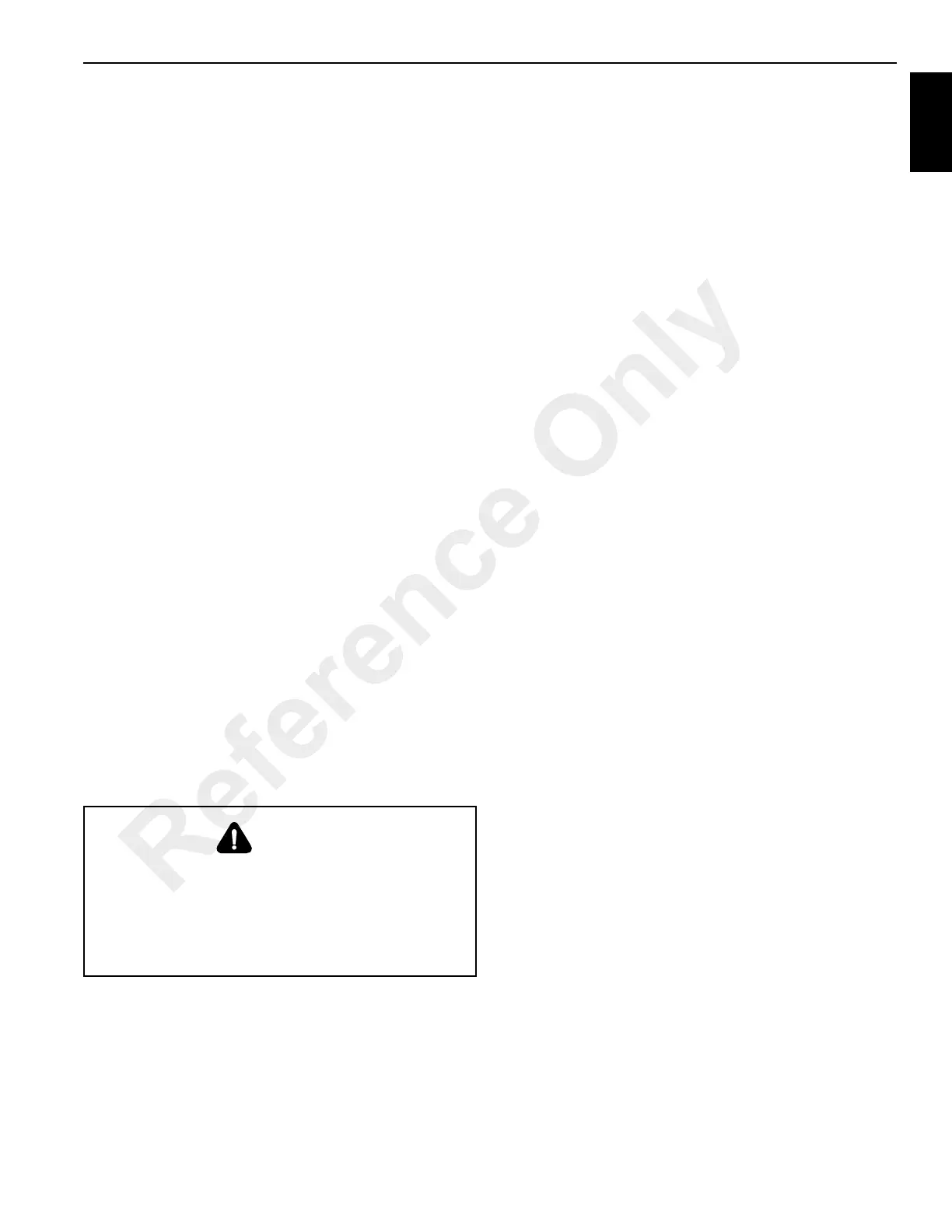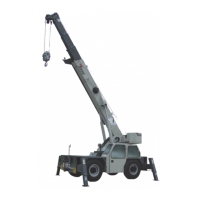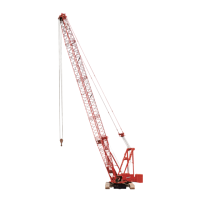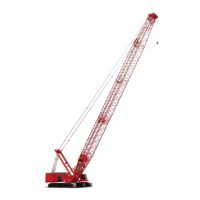GROVE Published 1-20-2017, Control# 483-02 1-7
CD5515-2/YB5515-2 SERVICE MANUAL INTRODUCTION
5. Consider the remaining service life of components
against the cost of parts and labor necessary to replace
them.
6. Make the necessary repair.
7. Recheck to ensure that nothing has been overlooked.
8. Functionally test the failed part in its system.
Cleanliness
An important item in preserving the long life of the crane is
keeping dirt out of working parts. Enclosed compartments,
seals, and filters have been provided to keep the supply of
air, fuel, and lubricants clean. It is important that these
enclosures be maintained.
Whenever hydraulic, fuel, lubricating oil lines, or air lines are
disconnected, clean the adjacent area, as well as, the point
of connection. As soon as the disconnection is made, cap,
plug, or tape each line or opening to prevent entry of foreign
material. The same recommendations for cleaning and
covering apply when access covers or inspection plates are
removed.
Clean and inspect all parts. Be sure all passages and holes
are open. Cover all parts to keep them clean. Be sure parts
are clean when they are installed. Leave new parts in their
containers until ready for assembly.
Clean the rust preventive compound from all machined
surfaces of new parts before installing them.
After Cleaning
Remove all water or solvent from the parts immediately after
cleaning. Use compressed air or a clean cloth. Make sure
the parts are completely dry and clean. DO NOT use
compressed air on bearings. Spinning bearings without
lubricant will cause damage to the bearing, and could cause
the bearing to fly apart.
Removal and Installation
When performing maintenance, do not attempt to manually
lift heavy parts when hoisting equipment should be used.
Never locate or leave heavy parts in an unstable position.
When raising a crane or portion thereof, ensure the crane is
blocked securely and the weight is supported by blocks or
jack stands rather than by lifting equipment.
When using hoisting equipment, follow the hoist
manufacturers recommendations and use lifting devices that
will allow you to achieve the proper balance of the
assemblies being lifted and to ensure safe handling. Unless
otherwise specified, all removals requiring hoisting
equipment should be accomplished using an adjustable
lifting attachment or straps designed for that purpose. All
supporting members (straps, chains and cables) should be
parallel to each other and as near perpendicular as possible
to the top of the object being lifted.
NOTE: The capacity of an eyebolt diminishes as the angle
between the supporting members and the object
becomes less than 90°. Eyebolts and brackets
should never be bent and should only have stress
in tension
Some removals require the use of lifting fixtures to obtain
proper balance. The weights of some components are given
in their respective sections of the manual.
If a part resists removal, check to be certain all nuts and bolts
have been removed and that an adjacent part is not
interfering.
Disassembly and Assembly
When disassembling or assembling a component or system,
complete each step in turn. Do not partially assemble one
part and start assembling another. Make all adjustments as
recommended. Always check the job after it is completed to
see that nothing has been overlooked. Recheck the various
adjustments by operating the machine before returning it to
service.
Pressing Parts
When pressing one part into another, use an anti-seize
compound or a molybdenum disulfide base compound to
lubricate the mating surfaces.
Assemble tapered parts dry. Before assembling parts with
tapered splines, be sure the splines are clean, dry, and free
from burrs. Position the parts together by hand to mesh the
splines before applying pressure.
Parts which are fitted together with tapered splines are
always very tight. If they are not tight, inspect the tapered
splines and discard the part if the splines are worn.
Locking Devices
Lockwashers, flat metal locks, or cotter pins are used to lock
nuts and bolts.
Flat metal locks must be installed properly to be effective.
Bend one end of the lock around the edge of the part. Bend
the other end against one flat surface of the nut or bolt head.
CAUTION
Eye Injury Hazard!
When using compressed air use only low air pressure and
keep air stream from direction of face.
Always wear eye and face protection when using
compressed air. Injury to eyes could occur.
Reference Only

